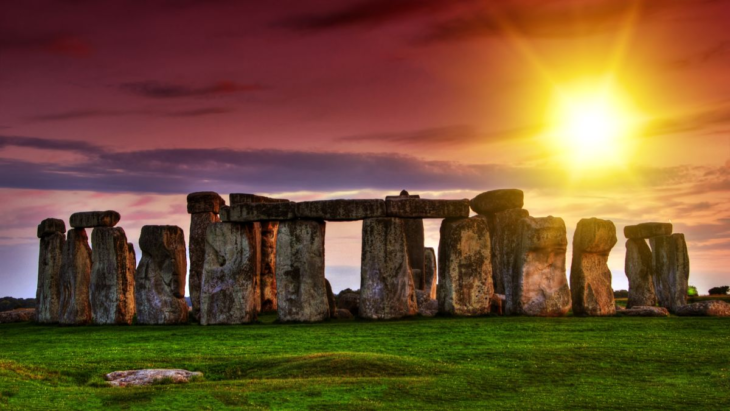
What Is the Winter Solstice, and Why Do People Celebrate It?

For most people, the winter solstice marks one of the most predictable non-events in the calendar year. It’s usually associated with the onset of a long winter and all the emotional drudgery that comes with it. But the event remains a fixture of our year-end activities because of its millennia-spanning cultural significance, even if it gets a bad rap in the Northern Hemisphere for being the darkest day of the year.
Here’s what you need to know about the winter solstice, including a very special cosmic coincidence happening this evening.
What are solstices?
The winter solstice marks the beginning of the winter season in the Northern Hemisphere, when the sun reaches its most southerly position. It’s the shortest day of the year in terms of sunlight, as the sun’s location above the Tropic of Capricorn (23.43 degrees south of the Equator ) ensures the day is the year’s most fleeting.
G/O Media may get a commission
Both the summer and winter solstices are the product of the Earth’s tilt. However, while we brace for months of frigid temperatures in the northern hemisphere, countries with much more southern latitudes such as Australia, South Africa and Argentina are relishing the onset of beach weather with the summer solstice, A.K.A. the longest day of the year. But where there is contrast, there is also balance: The northern hemisphere’s summer solstice typically falls on June 20, while the same date marks the winter solstice in the southern hemisphere.
The phenomenon occurs because of the Earth’s tilt and rotation as it orbits the sun. As National Geographic explains:
Solstices occur because Earth’s axis of rotation is tilted about 23.4 degrees relative to Earth’s orbit around the sun. This tilt drives our planet’s seasons, as the Northern and Southern Hemispheres get unequal amounts of sunlight over the course of a year. From March to September, the Northern Hemisphere is tilted more toward the sun, driving its spring and summer. From September to March, the Northern Hemisphere is tilted away, so it feels like autumn and winter. The Southern Hemisphere’s seasons are reversed.
Though the solstices are effectively opposite depending upon which hemisphere you reside in, they each occur predictably, usually on the same day each year.
CNN explains why the exact solstice date might change in a given year:
The solstice usually — but not always — takes place on December 21. The time that the solstice occurs and the day itself shifts because the solar year (the time it takes for the sun to reappear in the same spot as seen from Earth) doesn’t exactly match up to our calendar year.
The occasion is marked by celebrations across the world
Many religious traditions have held December as a symbolic time for renewal, much of which is inspired by the winter solstice. Many midwinter solstice celebrations have Pagan roots. Chief among them is Saturnalia, which the History Channel describes as something of a predecessor to Christmas. Other traditions have endured to this day, including St. Lucia’s Day (a Scandinavian holiday that sees girls “wear white dresses with red sashes and wreaths of candles on their heads”) and Toji (a Japanese tradition of renewal in which “people light bonfires to encourage the sun’s return”).
One of the more notable winter solstice celebrations occurs every year at the mysterious archaeological site Stonehenge in southern England, which sees revelers swarm it to greet the onset of winter. Though the origins of the site are still unknown, the structure manages to capture the sunset perfectly, which has led researchers to surmise that it was constructed in tribute of the solstice. This year, the site is closed due to COVID-19 restrictions, much to the chagrin of some of the more die-hard adherents of pagan culture.
Tonight’s solstice coincides with something special
Tonight’s solstice coincides with a big celestial bang, which has been coined the “Christmas Star” by astronomers with a media-savvy knack. The conjunction of Jupiter and Saturn will make the prolonged night sky a bit less bleak, as the two giant planets come closer than they have since the 1600s. It’s also the first time since the Middle Ages that the phenomenon has occurred at night.
The event is also called a “kiss,” since the planets will be o.1 degrees apart at their peak proximity, which is roughly 1/5 the size of the diameter of a full moon. The conjunction occurs every 20 years, but the pure coincidence of it happening on the winter solstice, plus the closeness of the two planets, gives it a real historical heft.